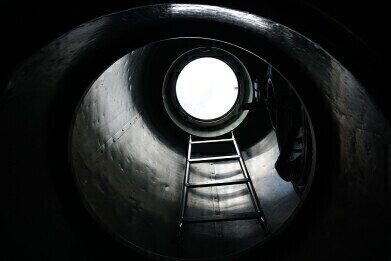Gas Detection
How Is Gas Monitored in Confined Spaces?
Dec 16 2022
Due to their enclosed nature, confined spaces represent unique challenges when it comes to ensuring workplace safety. Concentrations of combustible or toxic gases can quickly build up to unsafe thresholds, while oxygen levels can quickly be depleted. As a result, it’s imperative that site owners implement robust protocols aimed at monitoring the air in confined spaces.
The specific techniques used to do so may vary from site to site and will depend upon the environmental conditions in question, the nature of the work being carried out there and the types of gases being monitored. This article provides a basic introduction to the topic and serves as part of a longer series covering gas detection and everything you need to know about the subject.
What is a confined space?
A confined space is defined as one which has limited means of entry and exit, but still has sufficient space to house at least one employee and is not designed to be occupied for a continuous period of time. Such locations are found in a wide variety of industries, from the subterranean vaults used in telecommunications to the chambers of coal mines to the fuel tanks found in ships or aeroplanes.
These spaces are uniquely dangerous to employee safety, especially when one individual is working alone, since the composition of the air they breathe can change rapidly and without warning. In fact, statistics compiled by the Occupational Safety and Health Administration (OSHA) in the USA reveal that approximately 200 people die in confined spaces each year, with over half of those happening to people attempting to rescue a colleague.
Which gases are monitored in confines spaces?
Since an adequate supply of oxygen is vital to all human life, this is the most important gas which must be monitored in confined spaces. Concentrations must remain above 19.5%; below that level, workers may experience cognitive difficulties and impaired coordination. In extreme cases, they can lose consciousness and die. However, concentrations above 23.5% represent a risk of combustion, potentially resulting in fire or explosion.
Of course, this means that combustible gases must also be monitored to ensure they do not reach concentrations above their lower explosive limit (LEL) but below their upper explosive limit (UEL). At the same time, it’s important to monitor toxic gases like carbon monoxide and hydrogen sulphide. That’s because these gases can displace oxygen and poison an individual exposed to them in large enough concentrations for even a short period of time.
How are gases monitored in confined spaces?
Generally speaking, there are two methods of monitoring gases in confined spaces: fixed gas detectors, which provide a continuous assessment of gas levels in the confined space all the time; and portable gas detectors, which can be carried or worn by employees as they move into and around the space.
Both types of detectors provide unique benefits. For example, a fixed detector can provide a readout of the ambient air inside a confined space without an employee entering it, thus alerting them to any potential danger beforehand. On the other hand, portable detectors can provide an up-to-the-minute classification of gas concentrations at a specific point in the confined space and sound an alarm if it nears unsafe levels.
For anyone interested in learning more about this topic and how it might relate to their own workplace, the CoDGEM Guide to Gas Detection is now available to buy online and a provides a comprehensive introduction to all aspects of the subject.
Digital Edition
AET 28.2 April/May 2024
May 2024
Business News - Teledyne Marine expands with the acquisition of Valeport - Signal partners with gas analysis experts in Korea Air Monitoring - Continuous Fine Particulate Emission Monitor...
View all digital editions
Events
Jul 30 2024 Jakarta, Indonesia
China Energy Summit & Exhibition
Jul 31 2024 Beijing, China
2024 Beijing International Coal & Mining Exhibition
Aug 07 2024 Beijing, China
IWA World Water Congress & Exhibition
Aug 11 2024 Toronto, Canada
Aug 25 2024 Stockholm, Sweden and online









.jpg)








